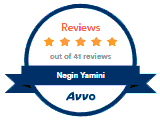California Penal Code 1203.4 forms the basis of California’s expungement law which allows individuals who were previously convicted to file a petition for dismissal/expungement of their infractions, misdemeanors, and felonies. An expungement, according to this section, releases a person from the disabilities and adverse consequences of a conviction. This law outlines the guiding principle and exceptions for who qualifies to have their conviction expunged and who does not. To qualify for an expungement under California Penal Code 1203.4, the defendant must have fulfilled all the conditions of his/her probation without any violations or has been discharged before the termination of the probation period, or if the court in the interests of justice and its discretion, establishes that the individual deserves to be granted the available relief as provided under this section.
The defendant is allowed by the court to withdraw his/her plea of nolo contendere or plea of guilty and enter a plea of not guilty provided that he or she is not charged with commission of any offense, is not on probation for any offense and is not serving a sentence for another offense. But in cases where the defendant was convicted after a plea of not guilty, the verdict of guilty shall be set aside. Once an expungement is granted, the accusations and any records relating to the case are dismissed and the defendant is released from all possible penalties and disabilities related to the offense they were convicted of, except as provided in California Vehicle Code Section 13555.
California Penal Code 1203.3 allows defendants to file a petition requesting the courts for early termination of their probation. The court has the discretion to change, modify, or revoke its order of suspension of execution or imposition of a sentence at any given time during an individual’s term of probation. Probation can only be terminated by the courts when a defendant’s good conduct and reform demonstrates that they deserve it.
Under PC 1203.3, the court also has the authority at any given time during a defendant’s mandatory supervision to modify, revoke or even change the conditions of the court’s order suspending the execution of the concluding portion of the defendant’s supervision term. It important to note that, this law outlines the guiding principles and immunities for early termination of probation qualification. Termination of probation is available for both misdemeanor and felony cases. The process basically involves filing a petition under Penal Code 1203.3(a) to have probation terminated with the sentencing court stating the reasons why the applicant deserves to be granted a relief. Since it is a discretionary motion, it is upon the judge to either to grant or deny the notion.
California Penal Code 17(b) is a governing statute that allows individuals convicted of a felony “wobbler” offense to request the court to have their felony abridged to a misdemeanor. There are three requirements that must be met for a defendant to qualify for felony reduction under PC 17(b):
- The defendant must have been given probation and sent to county jail
- Must have been convicted of a felony that can be charged either as a felony or misdemeanor
- He or she must successfully complete felony probation for the offense
Also, if convicted of any other felonies in the same case, the defendant must be eligible to have all the felonies reduced. The process involves petitioning the court where the conviction took place and a hearing date will be scheduled. The prosecutor must be served with the moving papers and given enough time to oppose the motion, if necessary. During the hearing, both parties will present their arguments and the judge will rule on the motion thereafter. If the petition is granted, the felony conviction will be abridged to a misdemeanor immediately. Under Penal Code 17(b), felonies are reduced to misdemeanors “for all purposes.” This implies that an individual who has previously been convicted of a felony can truthfully and legally deny that they were ever convicted of a felony. This includes loan applications, employment applications, and apartment applications. In other words, once the reduction is granted the law will not recognize the applicant as a felon. In some case, this remedy may help reinstate one’s gun rights.
California Penal Code 851.87 allows any individual who was wrongfully arrested but their arrest never resulted in a conviction to file a petition requesting the court to seal and destroy their arrest records “as a matter of right.” The section outlines the restrictions and guidelines for arrest record sealing eligibility. Under PC 851.87, you qualify to have your record sealed if you were wrongfully indicted for committing a criminal offense, only if:
- You were arrested but no charges were formally filed against you, and the statute of limitation on the charges has expired
- The charges were filed against you but were later dismissed
- You were acquitted in a jury trial
- The conviction was overturned on appeal and the charges cannot be refiled
- The charges were dismissed after you successfully completed a diversion program
Sealing an arrest record as a matter of right means that you are automatically eligible if the prosecutor is not able to prove that you’re not innocent. Unlike Penal Code 851.8 where the defendant is required to show factual innocence, PC 851.87 shifts the burden of proof to the prosecutor. Nearly everyone is entitled to have their arrest records sealed as a matter of right as long as no exemptions apply and the arrest did not lead to a conviction. A hearing may be requested 60 days in advance and if the order is made, the defendant may thereafter state that he or she was never arrested for the charge except in any application or questionnaire for a position as a police officer.
California Penal Code 4852.01 allows individuals who have served time in state prison to petition the court seeking a certificate of rehabilitation. Once the court grants a Certificate of Rehabilitation, it is automatically forwarded to the Governor of California as an application for a Pardon. However, a granted Certificate of Rehabilitation does not guarantee a Governor’s Pardon. PC 4852.01 provides guidelines as well as limitations for Certificate of Rehabilitation qualification.
You qualify to apply for a Certificate of Rehabilitation if you meet the following requirements:
- Must have been convicted and sentenced to state prison
- At least seven or ten years have passed from the time you completed the sentence or were discharged from parole, whichever is later
- After discharge from parole or completion of sentence, you must have lived an upright and honest life, and fully conformed to all laws
- You must have continuously lived in California for the last 5 years
Conversely, you are not eligible to apply for a Certificate of Rehabilitation in California if:
- You don’t meet the aforementioned requirements,
- You were convicted of misdemeanors, except for those that are sexual in nature,
- You are serving a mandatory life parole
- You were convicted of sex offenses under Penal Code section 288, 288.5, 286(c), or 288(j), or
- You are in the military
Assembly Bill 2582 was passed in 2011 and is an extension of the relief provided under California Penal Code 1203.4 to infractions, except for traffic violations. The existing law provides that individuals convicted of a specified misdemeanor and were not granted probation under specified conditions are allowed by the court to withdraw their guilty plea or no contest and enter a plea of not guilty. Also, the accusatory pleading against them shall be dismissed by the court. The existing law further gives the courts the power to set aside any guilty judgment after trial against the respondent, under similar conditions.
Assembly Bill 2582 changed an obsolete cross-reference that determines which misdemeanors are exempted from being dismissed and relief under these provisions. The bill would allow defendants convicted of infractions, except for specified motor vehicle-related infractions to apply for dismissal of charges and which would see them relieved from all penalties as well as disabilities that come with the offenses. It further provides that a petition for dismissal of an infraction must be by written declaration and that the dismissal of an infraction cannot be granted unless the prosecuting attorney receives a notice before the petition is filed, as required.
Welfare and Institutions Code 781 permits individuals to file a petition requesting the juvenile court to have their juvenile records sealed. You are qualified to have your juvenile records sealed if you satisfy the following requirements:
- You are 18 years old or 5 years have passed ever since the jurisdiction of the juvenile court terminated, whichever comes first
- You were not convicted in a juvenile court of specific serious offenses like murder, robbery, or torture committed after attaining 14 years of age
- As an adult, you have not been convicted of a California misdemeanor or felony involving moral turpitude
Juvenile records are not sealed automatically once you turn 18 years unless a judicial order is obtained to have them sealed and destroyed. Under this section, an individual is not eligible to have their records sealed if they were convicted in a criminal court. The defendant still has the obligation to pay victim restitution and any fines even after the records are sealed. Unless in cases where the court determines that there’s a good cause to retain the records, the court will give an order to have them destroyed when the person who is the subject of the record reaches 38 years of age or five years after the record was ordered sealed.
Welfare and Institutions Code 1772 allows those who were sent to juvenile prison (California Juvenile Youth Authority), and discharged by the Board of Juvenile Hearings, which disqualifies them from the relief provided for under Welfare and Institutions Code 781, to file a petition with the juvenile court seeking to have their juvenile offenses set aside. Once the petition is granted, the applicant shall be released from all penalties and disabilities associated with the crime or offense for which they were committed, including penalties or disabilities that affect their access to occupational licenses, education or employment. The verdict of guilty is set aside and all information or accusations against them are dismissed.
Welfare and Institutions Code 707(b) is referenced by Welfare And Institutions Code 781 and contains offenses which are not eligible for a relief under WIC 781 if they were committed as juvenile offenses. Under WIC 707(b), one is not a proper subject to be dealt with in Juvenile court if the court concludes that they would not be amenable to treatment, care or even training programs available through the facility of juvenile court based on:
- The degree of the criminal sophistication demonstrated
- Whether the individual is rehabilitated prior to the expiration of the juvenile court’s jurisdiction, which generally ends upon attaining age 21. But if convicted of a WIC 707(b) offense, for instance, murder, robbery, rape, kidnapping for ransom, kidnapping with bodily harm, Kidnapping for purposes of robbery, or attempted murder, the court’s jurisdiction can last until the defendant turns 25 years
- The success of the preceding attempts by the juvenile court to rehabilitate you
- The previous delinquent history
- The circumstances and gravity of the offense you are alleged to have committed.
The court will then determine whether or not the defendant is a fit and proper subject to be dealt with under the jurisdiction of the juvenile court based on the aforementioned factors. If the defendant does not qualify, they are likely to be tried as an adult.
California Proposition 36 is also referred to as the Substance Abuse and Crime Prevention Act of 2000. Prop 36 put in place a mandatory probation and drug treatment program instead of jail or prison for certain non-violent drug offenses. This law qualifies many more non-violent drug-related convictions available for California Penal Code 1203.4 expungement relief because it avoids state prison sentencing. From the time Prop 36 was passed, it changed California law to require that first-time and second-time defendants convicted of non-violent drug possession offenses receive up to twelve months of substance abuse treatment rather than incarceration. This period may be extended by 2 or 6 more months if necessary.
Prop 36 also applies to parolees who violated the conditions of their parole by committing a non-violent drug possession offense. In most cases, parolees who commit a nonviolent drug possession offense during parole or violates a drug-related condition of his or her parole, will not be sent back to prison, they will instead be subjected to a drug treatment program.
Under California Penal Code 1210.1, there are two separate programs, that is, Proposition 36 and Deferred Entry of Judgment under Penal Code 1000, that can provide anyone found guilty of a non-violent drug-related offense a chance to have their drug possession charges terminated if they commit to undertake a drug treatment program. These two programs are available for individuals charged with possession for personal use only and are guided by the idea that treating is better than putting one in jail or prison. It is worth noting that diversion programs under Penal code 1210.1 are only accessed by individuals charged with possession for personal use only and not for selling, manufacturing, or trafficking of drugs.
California Penal Code 1000 is California’s “pretrial diversion” law that requires certain drug-related offenses be eligible for diversion instead of conviction. All eligible defendants detained for low-level drug offenses are allowed to petition the court to have their charges dismissed so long as they successfully complete drug treatment programs. Once an individual successfully completes a drug diversion program under this law, the charges are dismissed, leaving one with no criminal record for most purposes. To qualify for Penal Code 1000 pretrial diversion, your charges must be simple possession of drugs. One is not eligible for pretrial diversion charged with selling, manufacturing, possession of a controlled substance for sale or transporting a controlled substance.
As provided under PC 1000, the following conditions must be met in order for an individual to qualify for drug diversion program:
- One must not have been convicted of a non-Penal Code 1000 qualifying drug crime within the preceding 5 years,
- The defendant must have no felony conviction on their record within the previous 5 years,
- The charged offense must not have involved a violent crime or one involving threatened violence, and
- There must be no proof of any additional and more serious drug crimes, like possession for sale or drug sale.








